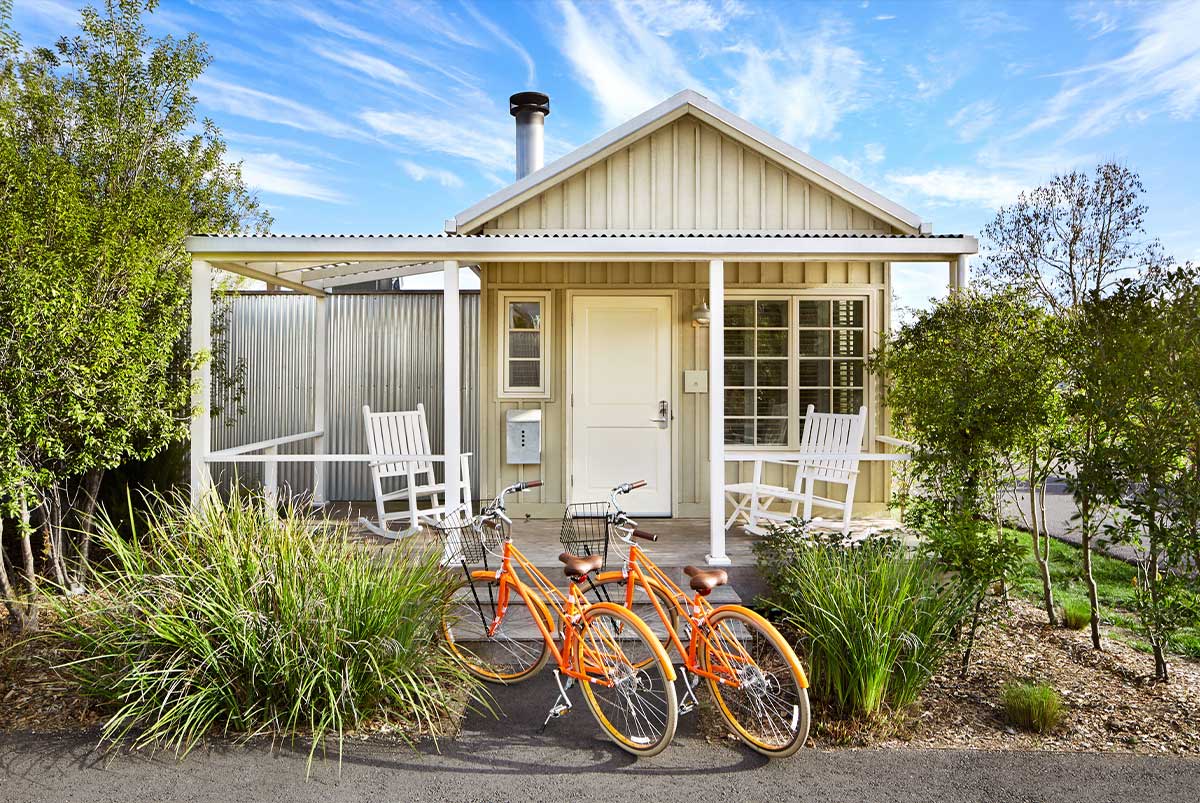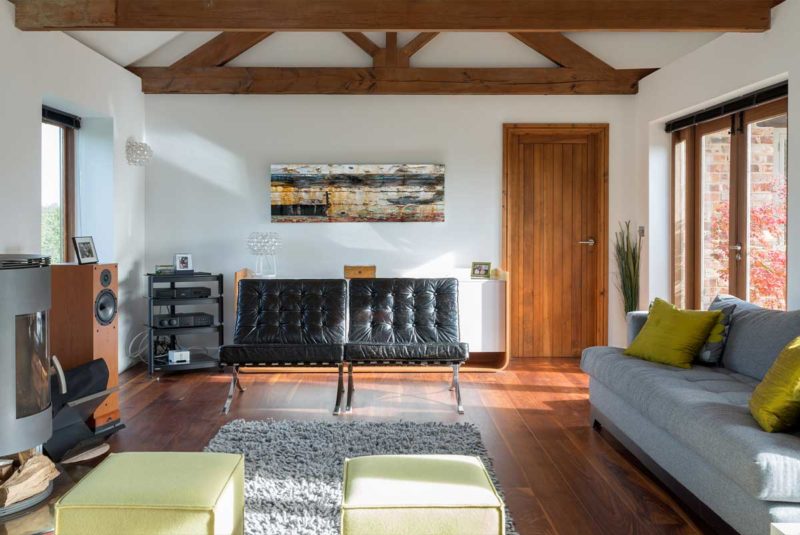Ready To Buy a Home?
Get Approved to Buy a Home
Rocket Mortgage® lets you get to house hunting sooner.
As a current or prospective home buyer, you know that every new home comes with different mortgage needs. Depending on your financial and real estate goals, you might look for alternatives to the standard 15- or 30-year fixed-rate mortgage to get the most from your money. That’s where a loan like the 7/6 adjustable-rate mortgage (ARM) comes in.
In this article, we’ll go over 7/6 ARM loans and how they work. We’ll also compare this option to other mortgages you might be considering.
What Does 7/6 ARM Mean?
A 7/6 ARM is a mortgage loan that starts with a fixed interest rate for the first 7 years of the loan (the “7” in 7/6). After the fixed-rate period ends, the lender adjusts the mortgage rate every 6 months according to market conditions for the remainder of the loan term (the “6” in 7/6).
Like the most popular fixed-rate mortgages, ARMs typically have a 30-year term, but switch to variable rates at the end of the fixed-rate period and stay that way for the rest of the loan term.
Other ARMs have different periods of adjustment. A common adjustment period is once every year for the remainder of the loan.
How Does a 7/6 Adjustable-Rate Mortgage Work?
Not all ARMs work the same, so it’s important to consider the different factors of each when you shop for loans.
Adjustment interval
The adjustment interval, or adjustment period, tells you how often the loan’s interest rate will adjust.
If you have a 7/6 ARM, the “7” represents the first 7 fixed-rate years, while the “6” represents the adjustment interval following the introductory period. For a 7/6 ARM, the interest rate is adjusted every 6 months for the remainder of the loan’s life.
Interest rates
The initial interest rate for a 7/6 ARM is usually lower than the going rate for fixed-rate mortgages. Once you close your mortgage deal, you’ll lock in that rate (sometimes mistakenly called a “teaser rate”) for the first 7 years of the loan.
When the initial 7 years are up, your lender will reset the interest rate every 6 months based on the market index and margin. Even in a stable market, your monthly payments could fluctuate quite a bit during the life of the loan.
Index and margin
Once lenders calculate your rate’s index, they’ll add a base percentage (or margin) to the index rate. Lenders determine margins based on a borrower’s credit score. So having a better credit score can help you get a lower margin rate.
The index interest rate for a 7/6 ARM is determined using the Secured Overnight Financing Rate (SOFR) index, which uses certain financial market indexes set by the Federal Reserve, such as the Constant Maturity Treasury.
Rate caps
You can generally expect your interest rate to increase, but don’t worry about the prospect of disproportionately high payments. Most ARMs have interest rate caps in place to keep payments at manageable levels. The 2/2/5 cap rate is among the most common structures. We’ve listed what each number represents in the order they appear:
- Initial adjustment: Limits the percent increase for the initial rate adjustment following the end of the fixed-rate period. For the 2/2/5 structure, your first adjustment after the fixed-rate period can’t raise the interest rate more than 2% higher than your initial fixed rate.
- Subsequent adjustment: Limits the percent increase in subsequent adjustments. In this case, subsequent adjustments can’t raise the interest rate more than 2% higher than the previous adjustment’s rate.
- Lifetime adjustment: It’s the max interest rate above your initial fixed rate, sometimes referred to as the interest rate cap. With a 2/2/5 cap, the interest rate may never exceed 5% more than your initial interest rate.
While rate caps limit how much your interest rate can increase, they also come with a floor that limits how much the rate can decrease following the initial adjustment.
How Does a 7/6 ARM Compare to Other Mortgages?
Before committing to a 7/6 ARM, you should check out a few other mortgage options. Each comes with its rates, terms, advantages and risks.
7/6 ARM vs. 7/1 ARM
Both loan options are 7-year ARMs. They typically have lower interest rates than fixed-rate loans, but 7/1 ARMs readjust interest once a year, while 7/6 ARMs readjust every 6 months.
7/6 ARM vs. 5-year ARM
Instead of a 7-year fixed-rate term with a 7/6 ARM loan, you can opt for a shorter term with a 5/1 ARM or 5/6 ARM loan. Although you won’t get to take advantage of the fixed rate for as long, 5-year ARMs generally have lower initial interest rates than 7-year ARMs.
7/6 ARM vs. 10-year ARM
The lengthiest fixed-rate term you’ll get is a 10-year ARM, either a 10/1 ARM or 10/6 ARM. Since 10-year ARMs have longer fixed-rate terms, they’re a lower-risk option for borrowers who aren’t in a hurry to sell their homes before the variable rate kicks in. On the downside, 10-year ARMs have slightly higher initial interest rates than 7/6 ARMs.
7/6 ARM vs. Fixed-rate mortgage
A 7/6 ARM typically has an interest-rate advantage over 15- and 30-year fixed-rate mortgages – at least during the initial fixed-rate term. ARMs start with lower interest rates than fixed-rate mortgages, but you may lose the interest-rate advantage if the variable rate hikes regularly exceed the fixed mortgage rates.
But ARMs could also adjust downward, which would be to your advantage.
Still need some help deciding which mortgage is right for you? Use our mortgage calculator to see how much your monthly mortgage would be with a fixed-rate mortgage or an ARM.
Find out what you can afford.
Research what your monthly payment might look like with our intuitive mortgage calculator.
When Might a 7/6 ARM Make Sense?
In the right scenario, a 7/6 ARM might make more sense for you than a fixed-rate or other mortgage option.
Short-term stay
A 7/6 ARM can be a great option if you’re not planning to settle down at the property you’re buying. If you intend to sell your home within a few years of purchasing it, getting a 7/6 ARM means you’ll only pay a lower fixed interest rate and never have to deal with higher-risk variable rates later on.
Interest rates are high
If interest rates are high when you plan to buy, a 7/6 ARM can help you secure a lower interest rate in the short term. If interest rates drop after the first 7 years of the loan, you may not see a major change in your interest payment. If it looks like interest rates will rise, you can try to refinance before the 7-year introductory period ends.
You anticipate earning more income
Some professions may not pay a lot at the start but may offer greater monetary rewards later in your career. If a higher rate might affect the affordability of your mortgage payments, it’s best to ensure you’re on a higher-income career path to keep up with increased rates down the line.
You want to convert to a fixed-rate loan
As with any ARM, if you want to refinance a 7/6 ARM to a fixed-rate loan before the adjustment period, you can.. To qualify, you’ll need to meet the requirements for your new loan..
Is a 7/6 ARM Right for You?
Now that you understand how a 7/6 ARM loan works, you can start considering whether it might be the financing solution that can help you afford a home.
Remember, regardless of which loan you choose and the type of market you’re buying in, keeping your credit and finances healthy is one of the best ways to get the best deal on a mortgage.
Keep a close eye on your finances as you’re looking into purchasing a property. And make sure you make your mortgage payments on time and in full after you’ve closed the deal.
Rising rates? No thanks.
Lock in your rate for 90 days with RateShield®. Make your moves on your time – no panic necessary.
RateShield® Approval is a Verified Approval with an interest rate lock for up to 90 days. If rates increase, your rate will stay the same for 90 days. If rates decrease, you will be able to lower your rate one time within 90 days.
Please contact your Home Loan Expert for additional information. This offer is only valid on 30-year FHA, VA and conventional purchase loan products. RateShield® Approval is not eligible for clients with a signed purchase agreement, on Charles Schwab loans or new construction loans. Additional conditions and exclusions may apply.
The Short Version
- A 7/6 ARM carries a fixed interest rate for the first 7 years of the loan. After the fixed-rate period ends, the rate is adjusted every 6 months
- Most 7/6 ARM loans have qualifications similar to any other conventional mortgage
- A 7/6 ARM might be the right fit for you if you’re planning to sell or refinance your home within 7 years or are expecting an increase in income




